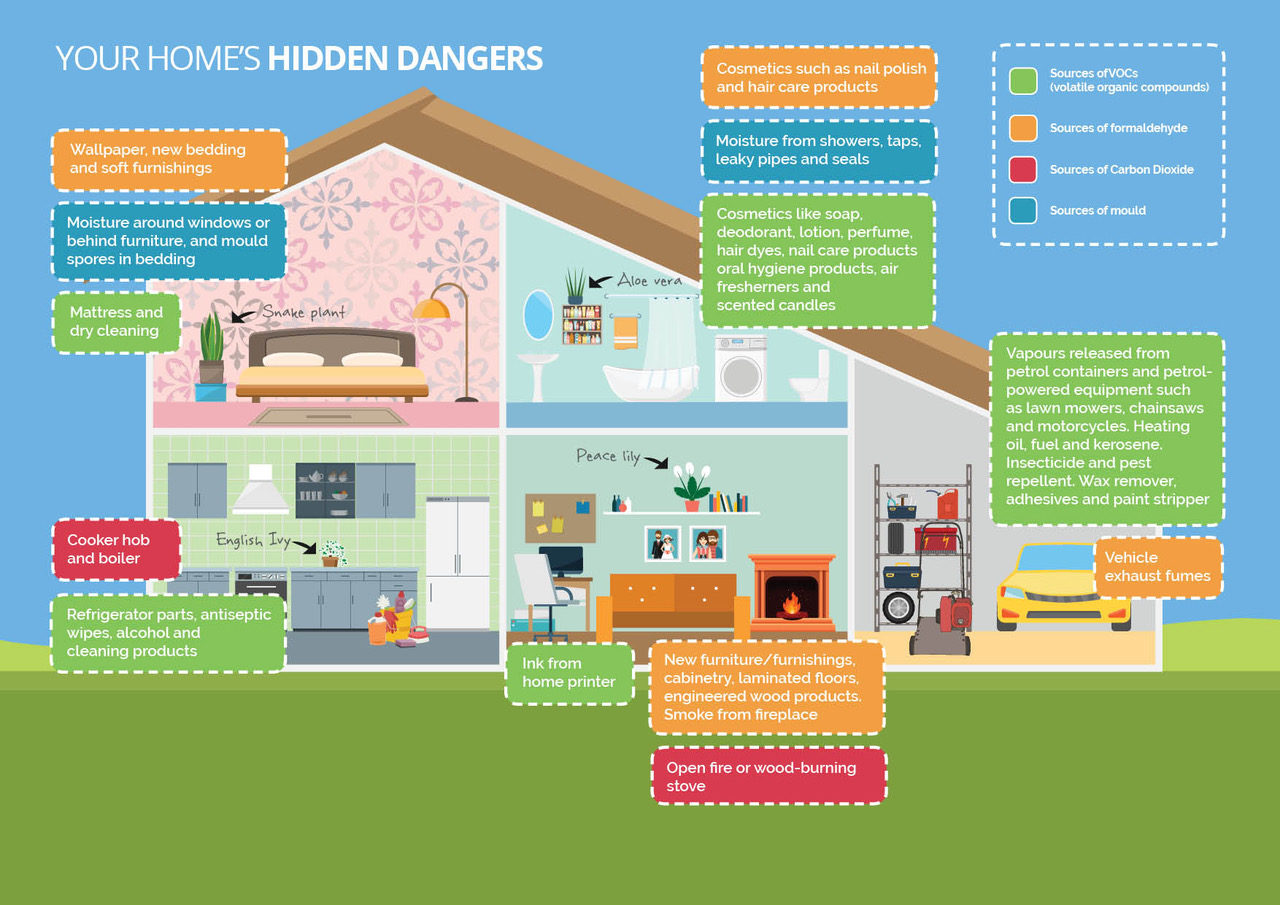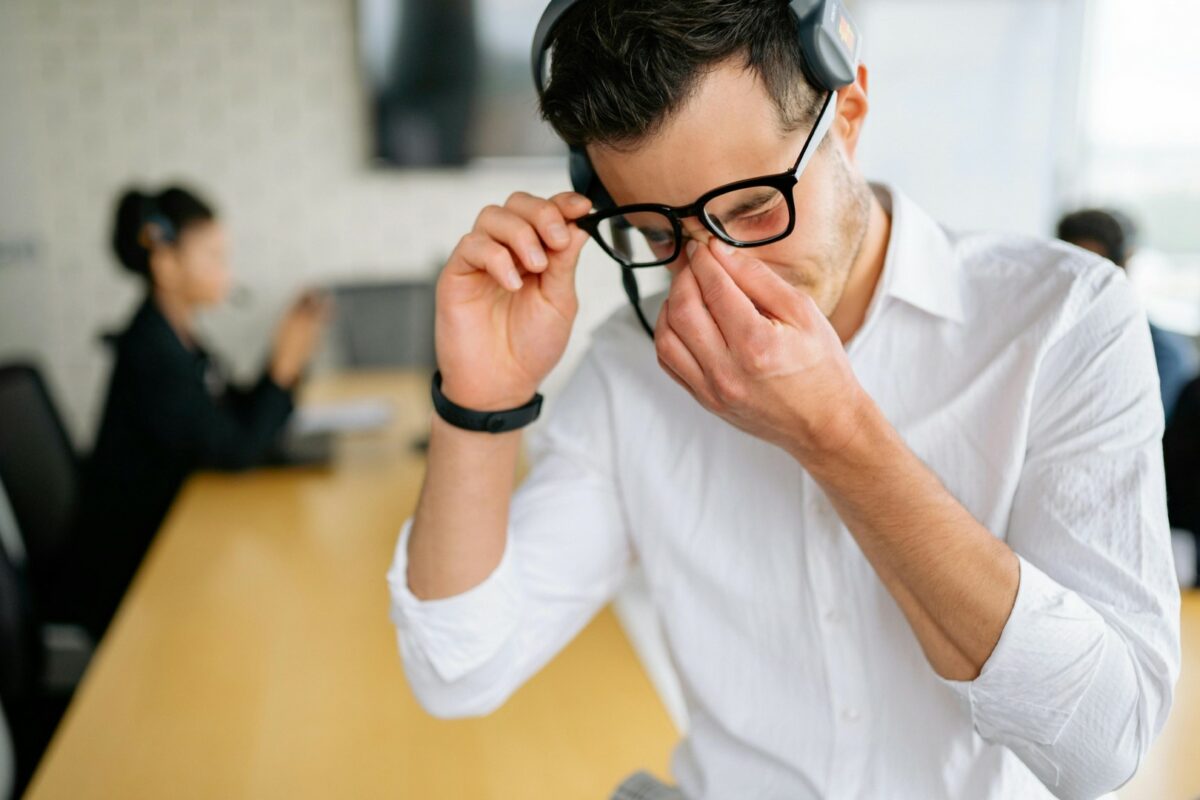The report, analysing data from 47 homes in Birmingham, London and the Home Counties, was launched in partnership with the Clean Air Day campaign, and was undertaken by indoor air pollution experts Airtopia.
Formaldehyde, among other air pollutants, was identified as one of the most toxic pollutants prevalent in UK homes. Formaldehyde is a human carcinogen and can be found in adhesives in wood products such as MDF, carpets, furniture, paints and varnishes. Health effects of formaldehyde include sore throats, rhinitis, nasal irritation and breathlessness. A fifth of UK homes showed significant levels of formaldehyde with 13% of properties exceeding World Health Organization (WHO) guideline limits.
Key findings include:
- A fifth of homes showed more than double the amount of safe levels of formaldehyde
- 45% of homes had significantly increased levels of Volatile Organic Compounds (VOCs) – with 28% of householders in homes with high VOC readings reporting multiple respiratory difficulties
- 98% of householders didn’t identify chipboard furniture as one of their top sources of pollution – chipboard is a major source of formaldehyde
- Leading authority on air pollution reveals health conditions linked to indoor air pollution, including asthma, cardiovascular disorders, thyroid disease, diabetes, impaired cognition and cancer.
45% of homes had levels of Volatile Organic Compounds
The report also identified that 45% of homes had levels of Volatile Organic Compounds (VOCs) that exceeded healthy levels, with 17% reporting high-to-serious levels of VOCs.* VOCs are a group of chemicals that readily evaporate into the air and have been linked to nausea, fatigue and headaches; some are also carcinogenic.
28% of homeowners with high VOC readings reported multiple respiratory difficulties
In this report, 28% of homeowners with high VOC readings reported multiple respiratory difficulties. The report identified that these high levels of indoor air pollution were mainly caused by the occupants’ day-to-day behaviour. Sources of VOCs include paints, varnishes, alcohol products such as cleaning solutions, hand sanitisers, air freshners, personal care products including deodorants, perfumes, hair dye, nail varnish, and scented candles.

Airtopia’s report also identified that a large proportion of households were unaware of the simple things they can do to reduce indoor air pollution – with 47% of households surveyed confirming that they never ventilate their homes at night.
71% of people feel that their health is affected by indoor air pollution
In addition, Opinium market research, commissioned by Clean Air Day organisers Global Action Plan, identified that while 71% of people feel that their health is affected by indoor air pollution, levels of awareness among households as to the main sources of indoor air pollution were also incredibly low: when asked to select the three biggest sources of indoor air pollution from a list we provided, 16 % of people were unable to give an answer; meanwhile only 2% identified chipboard furniture as a top source of pollution – chipboard is a major source of formaldehyde.
Only 13% reported using low-emission (labelled low VOC) paints, varnishes and glues when decorating or crafting
Remarkably few people reported doing things to reduce the level of VOC air pollution in their homes. For example, only 13% reported using low-emission (labelled low VOC) paints, varnishes and glues when decorating or crafting, and only 4% of respondents had opted for low emission carpets or furniture.
This research has been launched ahead of an interdisciplinary Working Party review, funded in part by Airtopia, into the effects of indoor air pollution on children and young people’s health. This is being carried out by the Royal College of Paediatrics and Child Health (RCPCH) in collaboration with the Royal College of Physicians (RCP).
One of the lead authors, Professor Stephen Holgate, a leading health and air pollution expert, said: “The data in this report reveals the scale of the indoor air pollution challenge. Indoor air pollution is being linked to many adverse health effects including asthma, cardiovascular disorders, thyroid disease, diabetes, impaired cognition and cancer. With these multitude of potential health effects it’s essential that more research is undertaken into this area to fully understand the health impacts and what needs to be done to keep people safe.”
Tim Robinson, Head of Science at Airtopia, said:
“There are literally hundreds of chemicals polluting our indoor air and this research from our Home Health Checks shows how important it is that householders understand this. It’s time we gave people more information to protect their health, and that is just what Airtopia is working to do.”
To find more content on indoor air pollution, click here.
Clean Air Day is the UK’s biggest air pollution campaign. It’s a chance to find out more about air pollution, share information, and make the air cleaner and healthier for everyone. Clean Air Day, which this year takes place on 20 June, is coordinated by environment charity Global Action Plan and is supported by more than 200 organisations, including Public Health England, British Heart Foundation, British Cycling, Royal College of Physicians, DEFRA, UNICEF, Asthma UK, Great Ormond Street Hospital and many NHS trusts and local authorities.
Clean Air Day partner Airtopia is a social enterprise that specialises in air quality audits of people’s homes.
Content Team
Work in Mind is a content platform designed to give a voice to thinkers, businesses, journalists and regulatory bodies in the field of healthy buildings.




